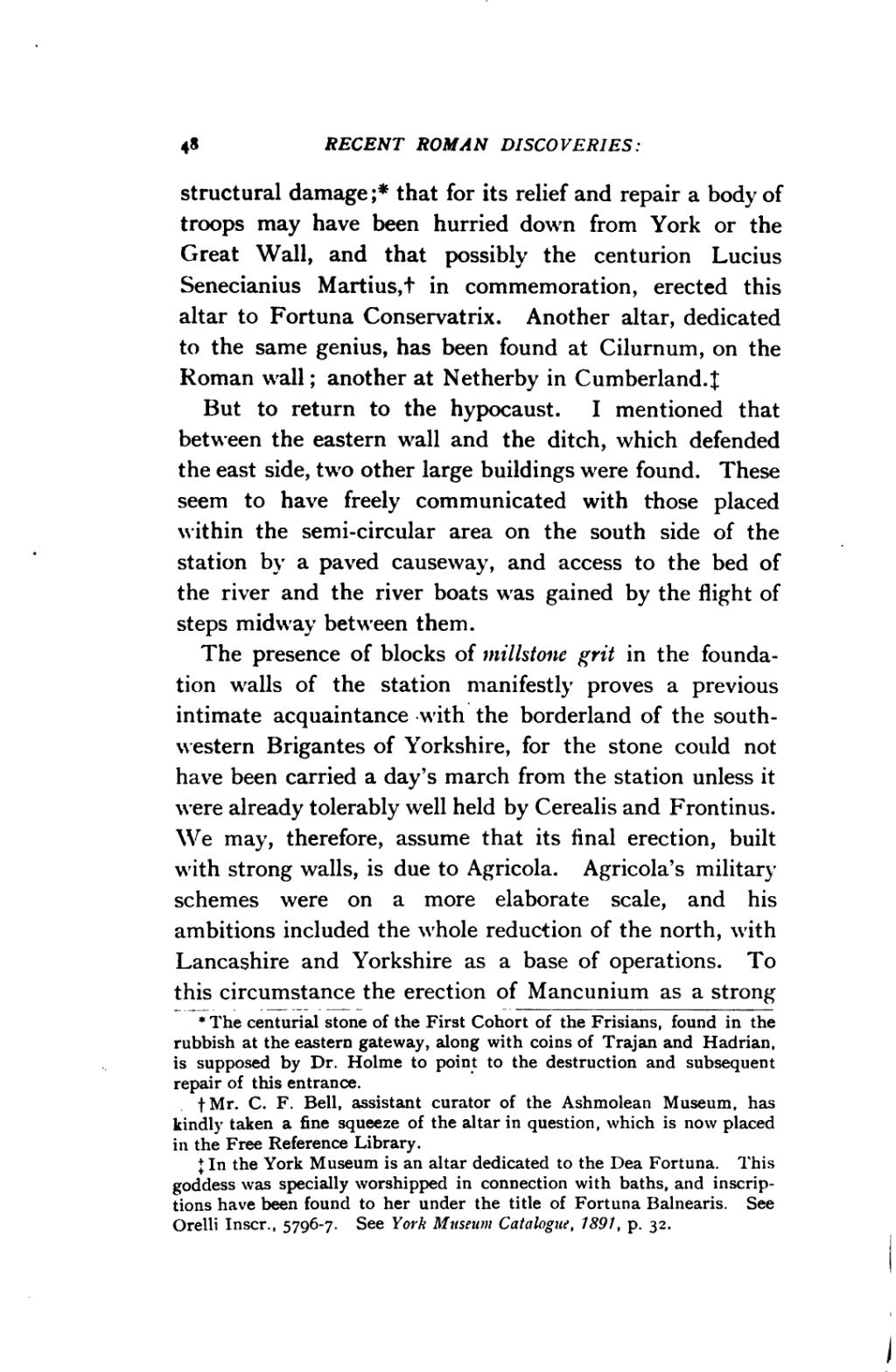structural damage;[1] that for its relief and repair a body of troops may have been hurried down from York or the Great Wall, and that possibly the centurion Lucius Senecianius Martius,[2] in commemoration, erected this altar to Fortuna Conservatrix. Another altar, dedicated to the same genius, has been found at Cilurnum, on the Roman wall; another at Netherby in Cumberland.[3]
But to return to the hypocaust. I mentioned that between the eastern wall and the ditch, which defended the east side, two other large buildings were found. These seem to have freely communicated with those placed within the semi-circular area on the south side of the station by a paved causeway, and access to the bed of the river and the river boats was gained by the flight of steps midway between them.
The presence of blocks of millstone grit in the foundation walls of the station manifestly proves a previous intimate acquaintance with the borderland of the south-western Brigantes of Yorkshire, for the stone could not have been carried a day's march from the station unless it were already tolerably well held by Cerealis and Frontinus. We may, therefore, assume that its final erection, built with strong walls, is due to Agricola. Agricola's military schemes were on a more elaborate scale, and his ambitions included the whole reduction of the north, with Lancashire and Yorkshire as a base of operations. To this circumstance the erection of Mancunium as a strong
- ↑ The centurial stone of the First Cohort of the Frisians, found in the rubbish at the eastern gateway, along with coins of Trajan and Hadrian, is supposed by Dr. Holme to point to the destruction and subsequent repair of this entrance.
- ↑ Mr. C. F. Bell, assistant curator of the Ashmolean Museum, has kindly taken a fine squeeze of the altar in question, which is now placed in the Free Reference Library.
- ↑ In the York Museum is an altar dedicated to the Dea Fortuna. This goddess was specially worshipped in connection with baths, and inscriptions have been found to her under the title of Fortuna Balnearis. See Orelli Inscr., 5796–7. See York Museum Catalogue, 1891, p. 32.
